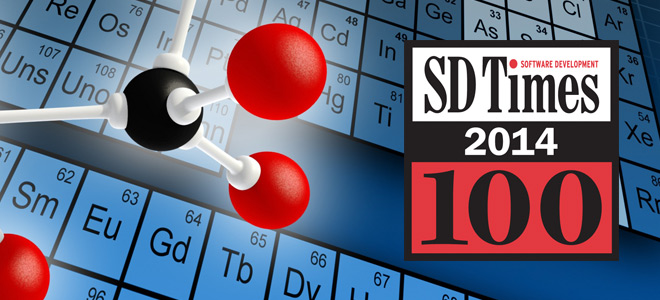
Along with this month’s issue of SD Times, you’ll find our SD Times 100 supplement, which shines the spotlight on several of the most innovative, industry-leading companies in software development today.
This marks the 12th year the editors here have chosen the SD Times 100, and glancing back at the first group of selections in 2003, it’s interesting to see how the industry has shifted, where things that once seemed vital to a successful development project now seem arcane at best, ludicrous at worst.
In that first list, for instance, we dedicated a category to software modeling. The leaders then were Rational Software for its Rose modeler (acquired by IBM), and Popkin Software (purchased by Telelogic in 2005, which was then purchased by IBM in 2008). Telelogic was on that list as well, for its Tau UML and SysML suite. But modeling, while still an important practice in large enterprises where software cannot be wrong, is not something we hear much discussion about anymore, and many of these companies were either bought or simply disappeared.
In 2004, we introduced a category called “Influencers.” These organizations or individuals dominated headlines and showed dynamic leadership, for better or worse—our inclusion of The SCO Group that year for its lawsuits against IBM and Linux that had everyone afraid of being sued for patent violations speaks to that. We also tipped our proverbial cap to U.S. Sen. Paul Sarbanes and Rep. Michael Oxley for guiding through a law that held top management responsible for the accuracy of their companies’ financial filings.
In 2006, we introduced categories around rich client and perhaps the most groundbreaking category of all: service-oriented architectures. Rich client, of course, was all about AJAX and Flash, and Google Maps. Then there was SOA. That year marked a race to the top for the old middleware vendors who had been pushing CORBA, integration orbs and message queues. BEA Systems (bought by Oracle in 2008), Progress Software, TIBCO and others were out to show the world that by connecting software services, applications could draw from multiple data streams. Today, this is what we call “the cloud.”
A big recession knocked the industry for a loop in 2008, but for 2009, new categories emerged once again: Cloud Computing, Rich Internet Applications, Mashups, Security and Web Development. These now form the foundation of where computing is at today.
Which categories will we see in the future? WebRTC, and its promise of real-time communications capability built into consumer applications, is an up-and-coming area. The social Web is another. Will artificial intelligence or virtual reality finally break through and become useful for enterprise application developers? Time will tell.
After all, back in 2003, who knew we’d be talking about “cloud” or “Big Data?”


